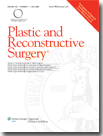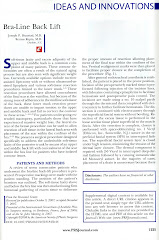So, what defines a full tummy tuck?
A full tummy tuck or abdominoplasty is best defines by the length of the lower incision as well as the release of the belly button from the abdominal skin and soft-tissue. Of course, most full abdominoplasty procedures also invlove muscle tightening if there is is abdominal wall laxity, and liposuction if there is excess adiposity (fat) in the abdominal soft-tissue and surrounding areas. However, it is the length of the incision and whether or not the belly button is released that trully defines a full abdominoplasty. The length of the incision usually spans the hip bones or ASIS (anterior superior iliac spines). It can be a little shorter or a little longer but not by much. A significantly shorter incision together with a belly button that is not detached from the surrounding skin and soft-tissue better defined as a mini-tummy tuck. Conversely, an incision that is much longer, that goes beyond the hip bones and onto the sides of the hips or flanks is better defined as an extended abdominoplasty (to be discussed in later post). The idea behind this is that an incision that extends onto the hips and flanks requires the patient to be rolled slightly during surgery in order to have access to these areas. Most importantly, however, an incision that goes beyond the hips bone and onto the side of the hips and flanks implies that the patient had significant exess soft-tissue laxity and the question then becomes whether a circumferential abdominoplasty (aks body lift, circumferential belt lipectomy, around the world abdominoplasty). I will discuss the circumferential abdomioplasty in great detail in a later post.
Who is not a good candidate for a full tummy tuck?
The very first answer to this question is anyone that is not healthy enough to undergo a full tummy tuck or any abdominal contouring procedure safely.
There are two groups of patients that are not ideal candidates for a full abdominoplasty. Those that do not have enough excess soft-tissue laxity and those that have two much soft-tissue laxity to benefit from the full tummy tuck. Of course there are some patients that would be better served by endoscopic tummy tuck or mini tummy tuck, as discussed in the previous posts. The other group of patients are those that have significant excess soft-tissue laxity. These patients would not get enough correction by limiting the incision up to the hip bones. If this is done one of two things usually results. The first is that the patient is left with laxity and will not be happy. The scond is that there can be folds of skin and soft-tissue at each end of the incision termed "dog-ears" (to be discussed in greater detail in later posts on complications). The reason for this is similar to pleating when clothing is tailored.
So, is the full tummy tuck a good procedure?
Absolutely. For the proper candidate the full tummy tuck is a great procedure. Procedure s are not inherently good or bad. They are good when performed properly for the appropriate patients and bad when performed poorly for patients that are not good candidates.
Next up. Use of liposuction in tummy tucks.
All the best,








5 comments :
What is the down time with a full tummy tuck? (i.e. returning to work, working out)
How long will it take after the tummy tuck procedure until I see the final results?
These are both very good questions. Downtime after a full tummy tuck is somewhat dependent on each individual as well as if muscle plication is performed. Since most tummy tuck candidates benefit from muscle plication I would say that the average length of downtime before returning to work is about 3 weeks. Of course this is also dependent on the type of work that each individual dose. In general, I tell patients that they should expect to walk a little hunched over the first week, be able to walk more or less straight the second week. And other than avoiding strenuous activity or heavy lifting, they should be back to basic levels of activity by about 3-4 weeks. With that said, most patients report that they get tired a little faster in the first week or two of regular activity.
With regards to seeing the final result, there is often dramatic change appreciated right away following surgery. Swelling may be noted to increase slightly in the first few days and then begin to go away. By the end of the first month, the majority of the swelling should have gone away. At the same time, I always remind patients that their incision line may appear its reddest or thickest at the 4-6 week period following surgery. This is normal and the final appearance of the incision line continues to improve even at one year after surgery.
Thank you for the wonderful comments and questions. Seeing how many of the last few comments have been about the recovery process I will place a specific post about what to expect during the recovery process following a tummy tuck procedure in the next few days.
All the best,
Dr. Repta
Dr. Repta,
I had a Tummy Tuck in 2006 with great results. I had to have a partial hysterectomy 4 weeks ago due to a tumor. Can you tell me if my TT will get back to normal as far as the tight feeling and the ledge I have will that go away?? Will I need another TT when I recover from this surgery? Thanks in advanced for any information you can provide.
Hi Roni,
Sorry for the delayed response. I have not been getting notified lately about blog posts/replies.
The short answer is that if the surgeon who did your hysterectomy put all of the layers of your abdomen together than you should bounce back to where you were before if there have been no other changes such as weight gain/loss etc.
If your weight is stable, and you have a depression at the hysterectomy scar with overhang of tissue more than approximately 6 months out, there is a good chance that it will not go away. The good news is that correcting that would be fairly simple. It would not require as extensive a procedure as the original tummy tuck and the down time would be less as well.
All the best,
Dr. Repta
Post a Comment